1. Model Thinking – A lot of times I think teachers (myself included) forget that students can’t read what goes on inside of our mind. We show students how we do something, without telling them why we’re doing it, because we know in our minds why we’re doing it, so we forget in their minds they don’t know why. Instead, when we show students how to work through a math problem or how to sound out a hard word, we need be saying things like “I know that 2 + 12 = 14, but I also know that 14 has a ten’s place, so I can’t put the whole number in the one’s place.” or “I know that a and e are both vowels, so when they are next to each other, I can only hear the first one, but it will have to be a long vowel because there are two vowels.”
2. Make them Explain their Thinking – I have a poster in my classroom that says “If You Don’t Know Why, You Don’t Know the Answer.” (Click on it to download it FREE from Google Docs.) I started telling my students this when I taught 3rd grade and we were preparing for that lovely
 standardized test. We would go over the test prep materials, and I would ask them “What is the answer to number 12?” They would answer “C” and I would ask them “Why?” They could rarely answer, so we decided as a class that if you couldn’t answer Why, it meant you had just guessed, and that wasn’t acceptable. From that point on, I have always asked my students to justify their thinking.
standardized test. We would go over the test prep materials, and I would ask them “What is the answer to number 12?” They would answer “C” and I would ask them “Why?” They could rarely answer, so we decided as a class that if you couldn’t answer Why, it meant you had just guessed, and that wasn’t acceptable. From that point on, I have always asked my students to justify their thinking.3. Let them Tell their Friends the Answer – We often thing that students who tell the answer are “cheating”. In my class, we differentiate between “telling” and “explaining”. If they can explain to their friend why that is the answer, and it’s group work time (not a test), then they are allowed to give each other the answers. Not only does this get the “teller” to think harder about what they did, but it also gives the receiving student another modeled thinking! (It’s also a great way to get ELL’s to use all that vocabulary you’re pushing into them!)
4. Play Games – Strategy games are wonderful for building thinking skills. Games like Chess, Monopoly and Risk are obvious choices, but games like Battleship and Scrabble have a lot of strategy to them too, and they can reinforce math and literacy concepts. (Check out my Friday Game Nights



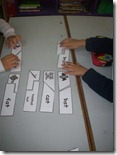 math puzzles and reading puzzles. In addition to supporting the math and literacy standards we are working on, students are using critical thinking skills to put the puzzle together – and they think they’re just having fun!
math puzzles and reading puzzles. In addition to supporting the math and literacy standards we are working on, students are using critical thinking skills to put the puzzle together – and they think they’re just having fun!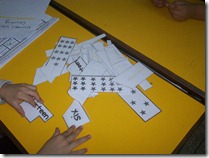



7. Encourage Visual Thinking – Most kids love to draw, and often it is easier for them to describe their thinking with pictures, rather
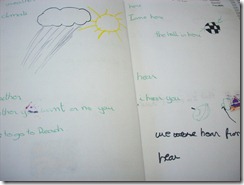 than words. This technique is used for primary students and English Language Learners a lot, but could be a real benefit to all students. When you are working on vocabulary words or problem solving, encourage students to make that picture on paper that they see in their mind.
than words. This technique is used for primary students and English Language Learners a lot, but could be a real benefit to all students. When you are working on vocabulary words or problem solving, encourage students to make that picture on paper that they see in their mind.8. It’s Okay to Have the Wrong Answer – Scientists know that it takes a lot of wrong answers to get the right answer. Kids often get discouraged after one wrong answer, so rather than saying “You got it wrong.”, try saying “Not the right answer, but good thinking. Let’s think about it another way.”
9. Count the Possibilities– How many representations are there for the number 6? (six, 6, XXXXXX, sieze, ------) Encourage students to look at all the ways they can represent numbers, words, etc. Each new way to see something is a new way to think about it.
10. Find the Connections – When you connect what you are learning to something you already know, you remember it better, but you also find a new way to think about both things that are connected. Connections are also a form of analogy, which is a key type of critical thinking. So, encourage students to find something that is similar to key vocabulary, key math facts, events from a story etc.
Check out more Top 10 Posts from Raki's Rad Resources.
![signature_thumb1_thumb_thumb_thumb_t[2] signature_thumb1_thumb_thumb_thumb_t[2]](http://rakiradresources.files.wordpress.com/2012/02/signature_thumb1_thumb_thumb_thumb_t2_thumb7.png)




 Pronunciator
Pronunciator

![signature_thumb1_thumb1_thumb_thumb_[2] signature_thumb1_thumb1_thumb_thumb_[2]](http://rakiradresources.files.wordpress.com/2012/02/signature_thumb1_thumb1_thumb_thumb_2_thumb2.png)




![signature_thumb1_thumb_thumb_thumb_t[1]_thumb signature_thumb1_thumb_thumb_thumb_t[1]_thumb](http://rakiradresources.files.wordpress.com/2012/02/signature_thumb1_thumb_thumb_thumb_t1_thumb_thumb.png)


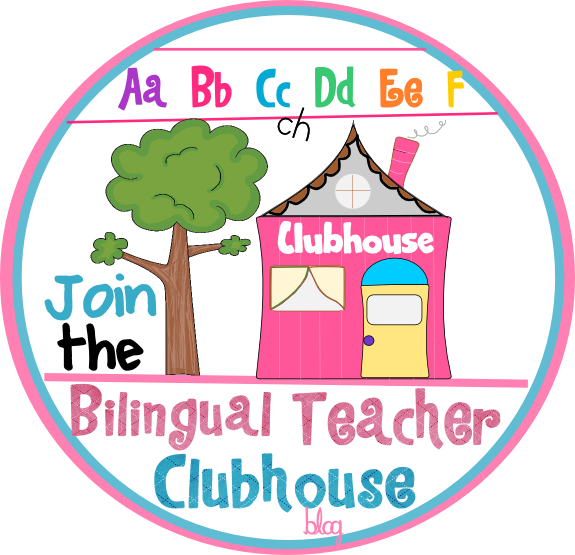

![signature_thumb1_thumb_thumb_thumb_t[1] signature_thumb1_thumb_thumb_thumb_t[1]](http://rakiradresources.files.wordpress.com/2012/02/signature_thumb1_thumb_thumb_thumb_t1_thumb1.png)

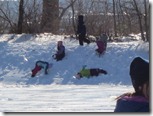




![signature_thumb1_thumb_thumb3222222[2] signature_thumb1_thumb_thumb3222222[2]](http://rakiradresources.files.wordpress.com/2012/02/signature_thumb1_thumb_thumb32222222.png)

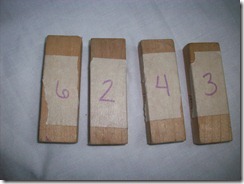
![signature_thumb1_thumb_thumb_thumb_t[2] signature_thumb1_thumb_thumb_thumb_t[2]](http://rakiradresources.files.wordpress.com/2012/02/signature_thumb1_thumb_thumb_thumb_t2_thumb6.png)